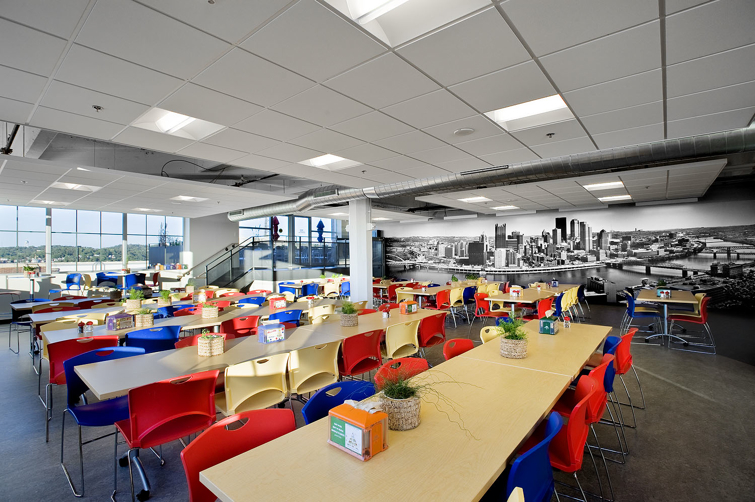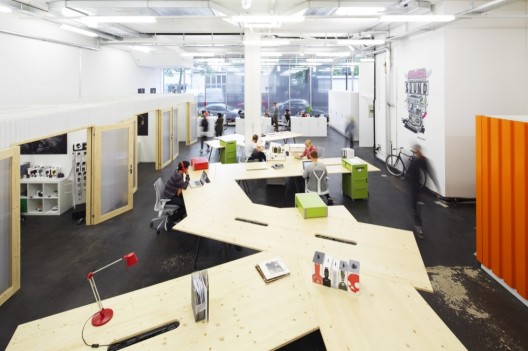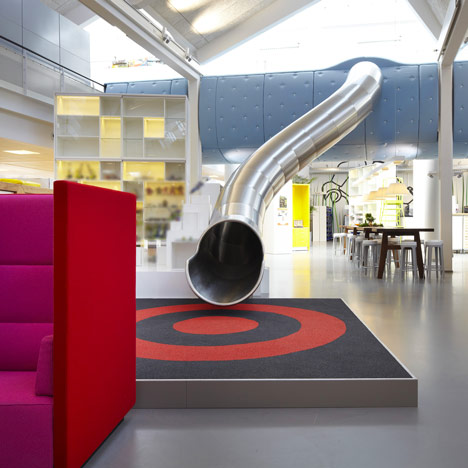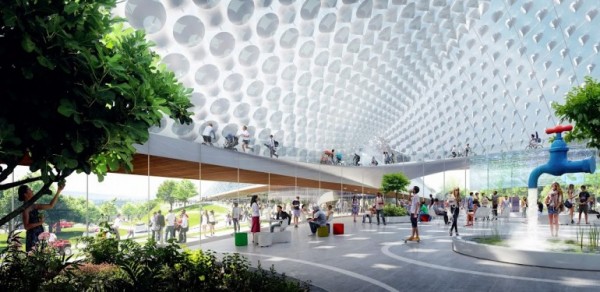How big trends are bringing big changes to the workplace
Gone are the days you would stroll into the office, clock in and find your way to your assigned cubicle. That’s right, these days many offices may not even give you your own desk. Instead, they equip you with the ability to go mobile. With phones, laptops and the capability to plug in anytime and anywhere, we’ve essentially become our own portable office.
From the normalization of the open office, to basketball courts and nature trail within the building, the 2015 office is anything but boring. And with companies like Google, LEGO and Twitter leading the way, these trends are quickly gaining popularity.
So, what do these trends actually look like and how are they affecting company morale?
Today’s post takes a look at some of the biggest trends for 2015, how big name brands are making them happen, and the positive, as well as negative effects, they may have.
Goodbye Cubicle, Hello Collaboration
Taking a cue from companies like Google, firms are ditching the private office and cubicles for more collaborative spaces. By tearing down the walls, both literally and figuratively, colleagues are more likely to socialize and collaborate. And what’s the most effective way to come up with innovative, creative ideas? Communication, of course!
Image courtesy of: www.fastcodesign.com
Instead of providing each worker with their own space, essentially cutting them off from the rest of the workers, these collaborative areas, equipped with giant tables and brainstorming boards, are meant to boost morale, improve company communication and stimulate the flow of innovative ideas.
The problem, however? Big open spaces may be great for communication, but they also bring about distractions, and plenty of them. Those who are easily sidetracked, require a very quiet atmosphere to concentrate or who simply have personalities that prefer to avoid unnecessary interaction, suffer the most from such a plan.
The solution? Many companies are building “privacy pods,” or areas that allow workers to have a quiet, isolated work space. In this case, companies aren’t paying extras to provide each employee with their own personal space, and workers aren’t forced to simply deal with a not-so-easy work environment.
Total Flexibility
Taking the open office space one step further, companies are creating spaces that are extremely flexible and adaptable for everyday work. Take a look at the Skullcandy International office in Switzerland, for example. The company has introduced customizable working stations, or desks that allow for reconfiguration and adaptability.
Image courtesy of: www.archdaily.com
Combine such a space with technology and the ability to use laptops and smartphones at each work station, and the need for a personal office becomes obsolete.
This new trend still poses the question of functionality versus practicality, however. Are open spaces like this productive for all workers, or only the extroverts? Furthermore, when people lose their personal space at work, a place they can decorate with pictures of family and friends, and a place where they can give a little bit of their own particular style, are they losing their sense of belonging in the company, too? Some may feel that such an arrangement makes them anything but irreplaceable.
Over-the-top Design
Another trend taking on a life of its own is the extra-ordinary office. Take a look at the LEGO offices in Denmark. Lego’s office is the epitome of creativity. The space is fit with everything from crazy colorful walls to slides and foosball tables. It’s safe to say that the word “bored” doesn’t chime through the corridors of a place like this. And LEGO isn’t the only company to treat their employers to such a creative work space. Big name companies like Pixar, Twitter and Dropbox are doing the same. Such offices are including amenities like basketball courts and complete gyms.
Image courtesy of: www.dezeen.com
Google’s even released plans to go from crazy office to a complete community, with several campuses and nature trails being proposed.
Image courtesy of: www.gizmag.com
But again, are such offices too over the top? When it gets to the point that someone can go to work, spend their break pumping iron in the gym, or playing a game of pick-up basketball, is the workplace becoming too comfortable? These work spaces are blurring the line between home life and the office. But is this a positive or a negative?
Office spaces are constantly evolving, and with bigger companies embracing radical change, it’s sure to trickle down to smaller firms as well. The question is, how can companies deal with the disadvantages that come along with such innovative design? Is the risk of disturbing a few employers worth the chance of opening other workers open to collaborative interaction? While companies must face these questions for themselves, only time will to tell if these trends will catch on, or simply remain a reality for top-name firms.
We would love to hear from you, too. Have you seen any of these trends taking place within your own company? Have you personally experienced the advantages or disadvantages of such changes? Comment below!